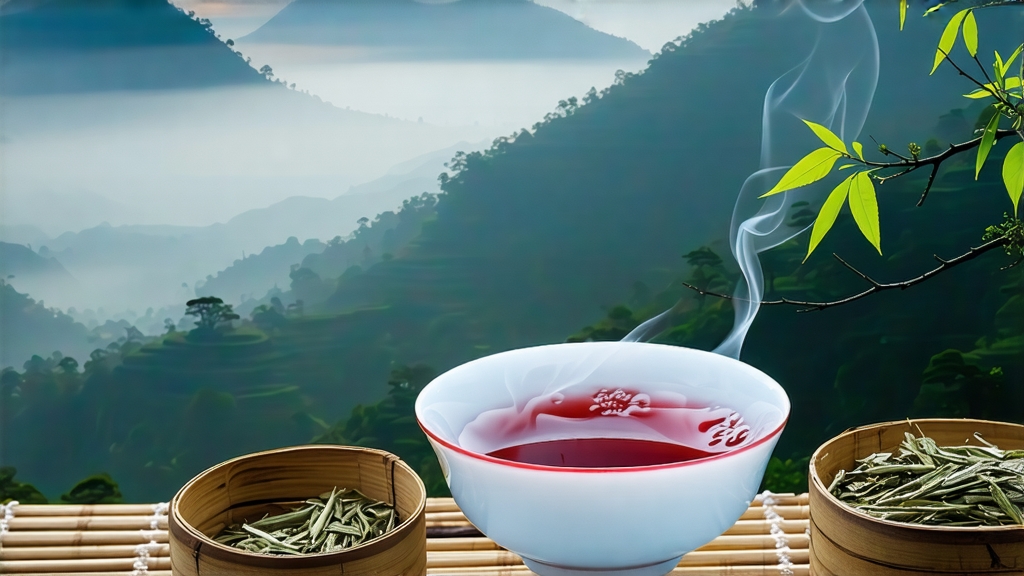
Long before Assam, Ceylon or Earl Grey existed, the first fully oxidised leaf that would later be called “black tea” was born in the rugged Wuyi Mountains of northern Fujian. Locals simply named it “xiao zhong” (small-leaf variety) and, because it was produced in Tongmu Pass high above the river bend, European traders added the Cantonese word “lap” (pine) and christened it Lapsang Souchong. From the late Ming dynasty onward, Dutch and British merchants carried this smoky, wine-red liquor across oceans, igniting a global thirst that would reshape economies and cultures. Today, despite countless imitations, only leaf picked inside the 565 km² core protection zone of the Wuyi National Park can legally bear the name Zheng Shan Xiao Zhong—True Mountain Small Leaf.
The micro-terroir is unforgiving yet generous. Granite cliffs funnel cool mist into narrow valleys where daylight is filtered through towering Masson pines and bamboo. Humidity lingers at 85 %, nightly temperatures drop 10 °C, and the soil is a thin, acidic layer of weathered volcanic grit. Under these stresses, the indigenous cultivar—caixia, a shrubby descendant of ancient wild tea trees—develops tiny, elastic leaves with an unusually high ratio of terpene-rich essential oils. Those oils are the biochemical key that allows Lapsang to absorb and later release the resinous aroma of pine smoke without tasting acrid.
Two distinct styles now share the same origin story. Traditional Pine-Smoked Lapsang is crafted exactly as it was in 1640. The second, increasingly popular style is Unsmoked Zheng Shan Xiao Zhong, a sweet, longan-fragrant tea invented for the modern Chinese palate. Both begin identically: one bud and the first two leaves are plucked before Qingming when spring growth is still velvet-soft. The baskets are carried on foot to the only building permitted inside the nature reserve—a slate-roofed workshop whose rafters are blackened by decades of smoke.
Withering happens in two stages. First, the leaves are laid on bamboo screens suspended over a sunken corridor of gently smouldering pine embers. The heat is shy, never exceeding 30 °C; the goal is to coax moisture outward while the wood vapour softens cell walls. After two hours, the leaf loses 15 % of its weight and emits a faint sugared-bread aroma. Workers then roll the leaves by hand, pressing and twisting until the cellular juice froths to the surface. Oxidation follows in wooden troughs lined with wet cloth; the pile is turned every twenty minutes so that oxygen can tint the leaf copper without ever allowing it to hot-ferment. When the grass-green hue has fully surrendered to a uniform rust, the leaf is ready for its defining moment—firing and smoking.
For the classic version, the same pine logs are now burned hotter. A woven bamboo sieve is placed 1.5 m above the flames; the leaf dries in less than three minutes, but the rising smoke continues to kiss the leaf for an additional six hours in a sealed room. Resin particles adhere to the trichomes, creating the unmistakable aroma of burnt caramel and cured bacon. In contrast, the unsmoked style is finished in an electric oven at 80 °C for two hours; no wood is burned, allowing the cultivar’s natural notes of lychee and honey to dominate.
Judging quality begins with the dry leaf. Superior Lapsang is slender, glossy, and coal-black with golden tips; when shaken, it sounds metallic, a sign of low residual moisture. First infusion should be brief—five seconds at 95 °C—so that the smoke acts like a perfumed curtain parting to reveal a sweeter stage. The liquor glows amber under light, edging toward claret in later steeps. Aroma descriptors move from pine resin, roasted chestnut and liquorice to dried longan, dark chocolate and finally cooling camphor in the empty cup. The texture is thick, almost oily, yet finishes with a clean, mineral snap reminiscent of wet slate.
Gongfu service is the most rewarding way to experience these evolving layers. Use a 120 ml gaiwan and 5 g of leaf. Rinse